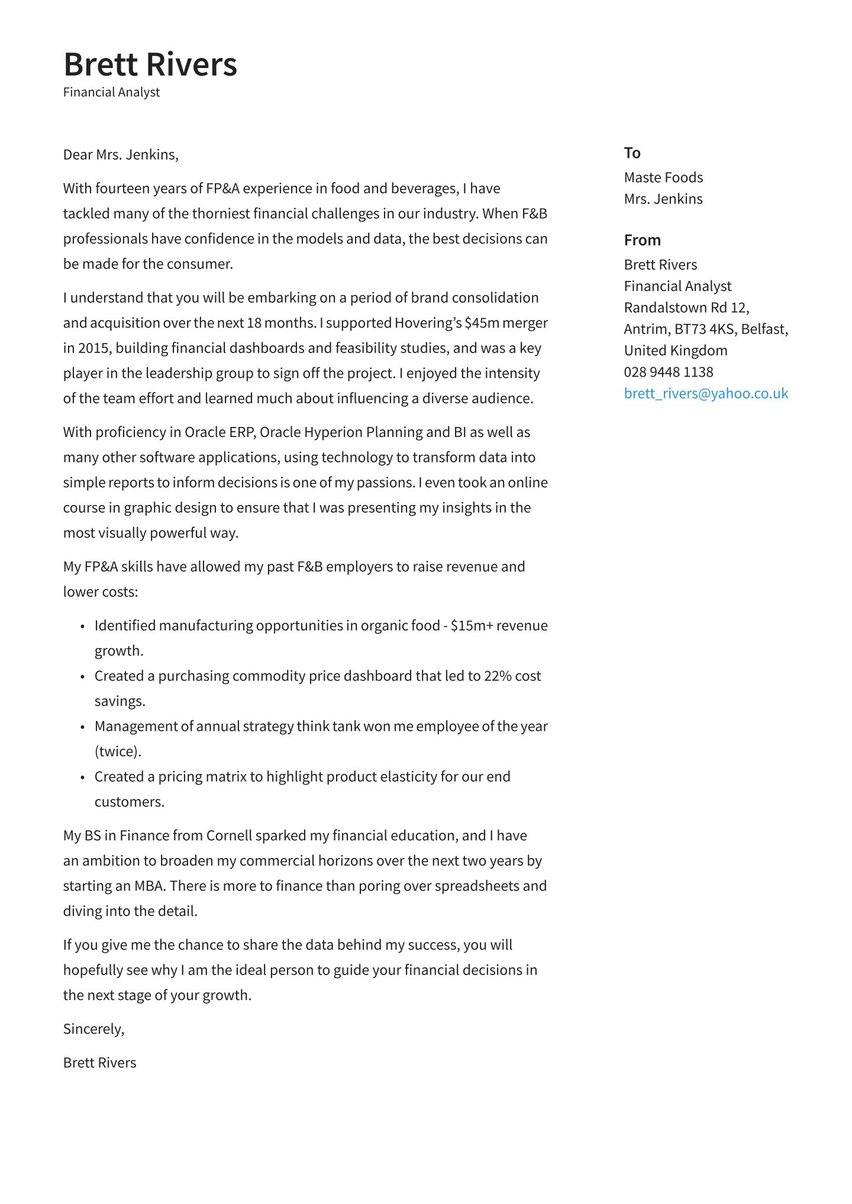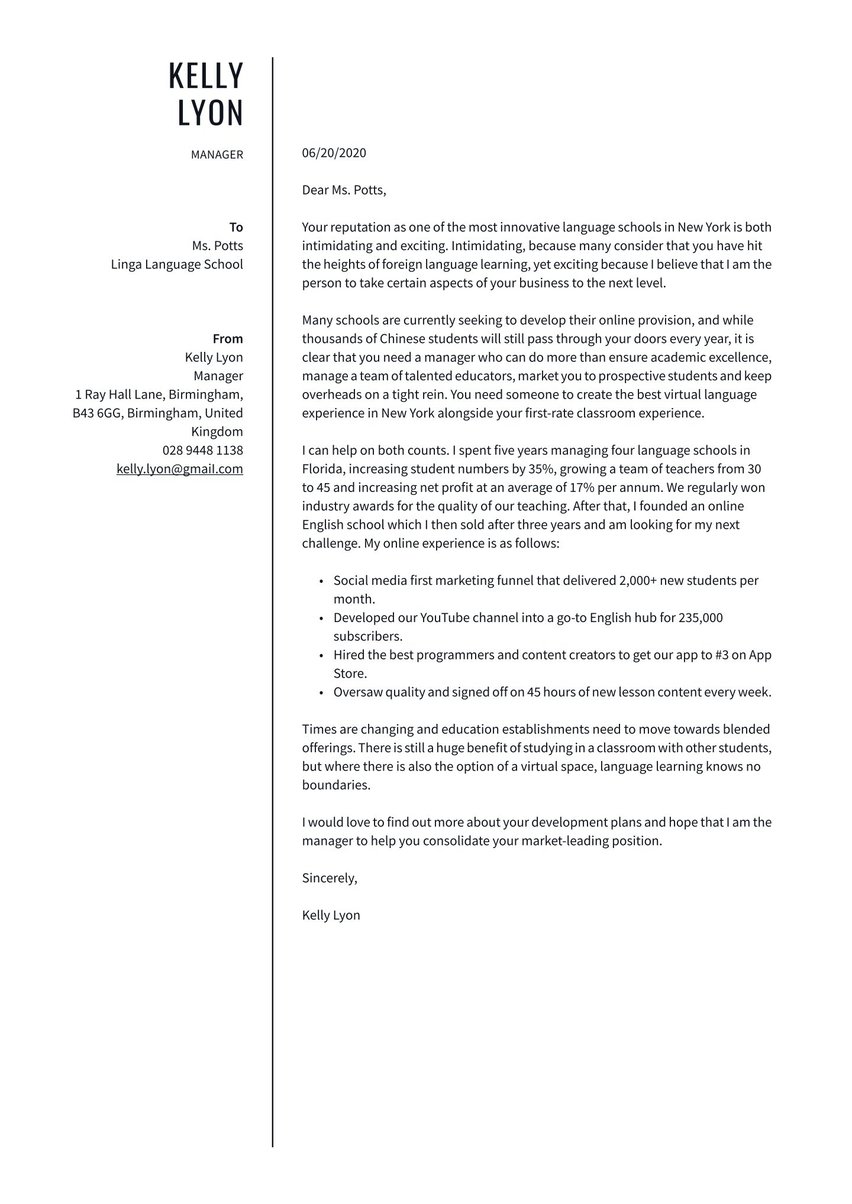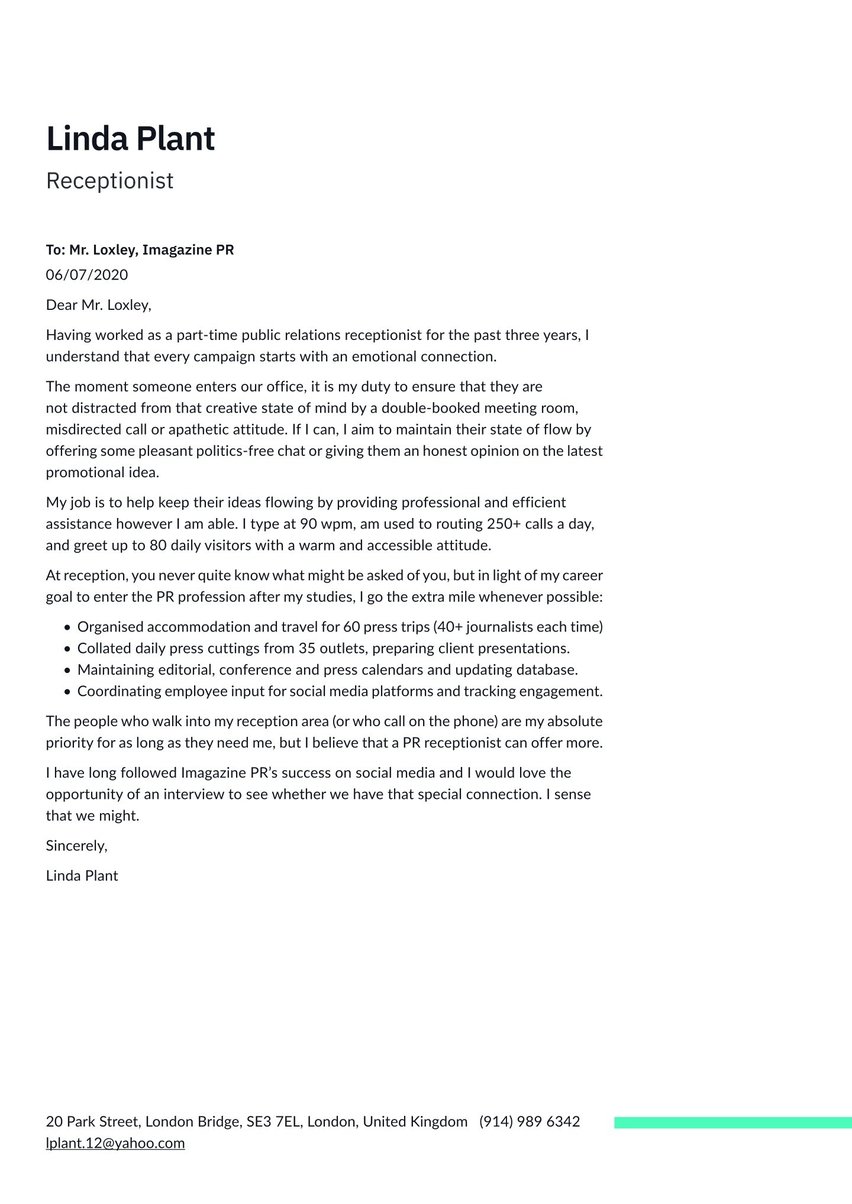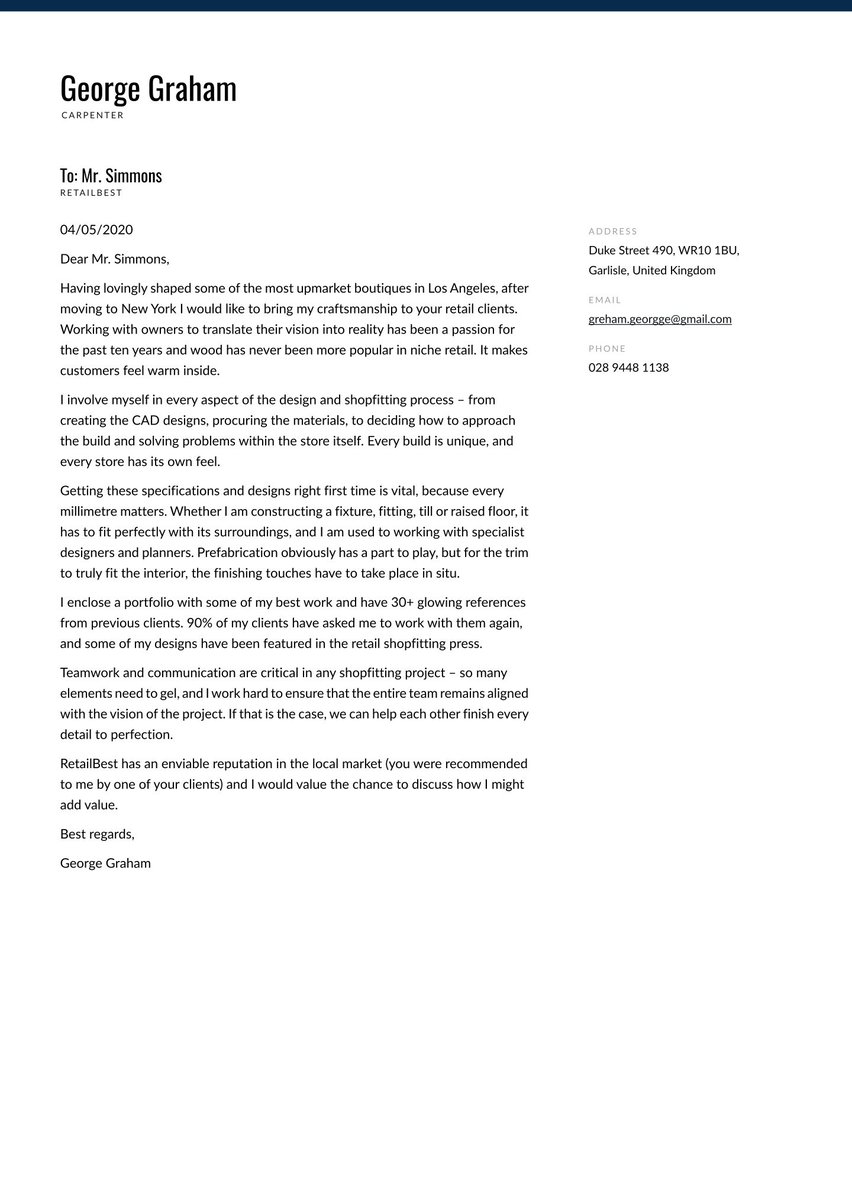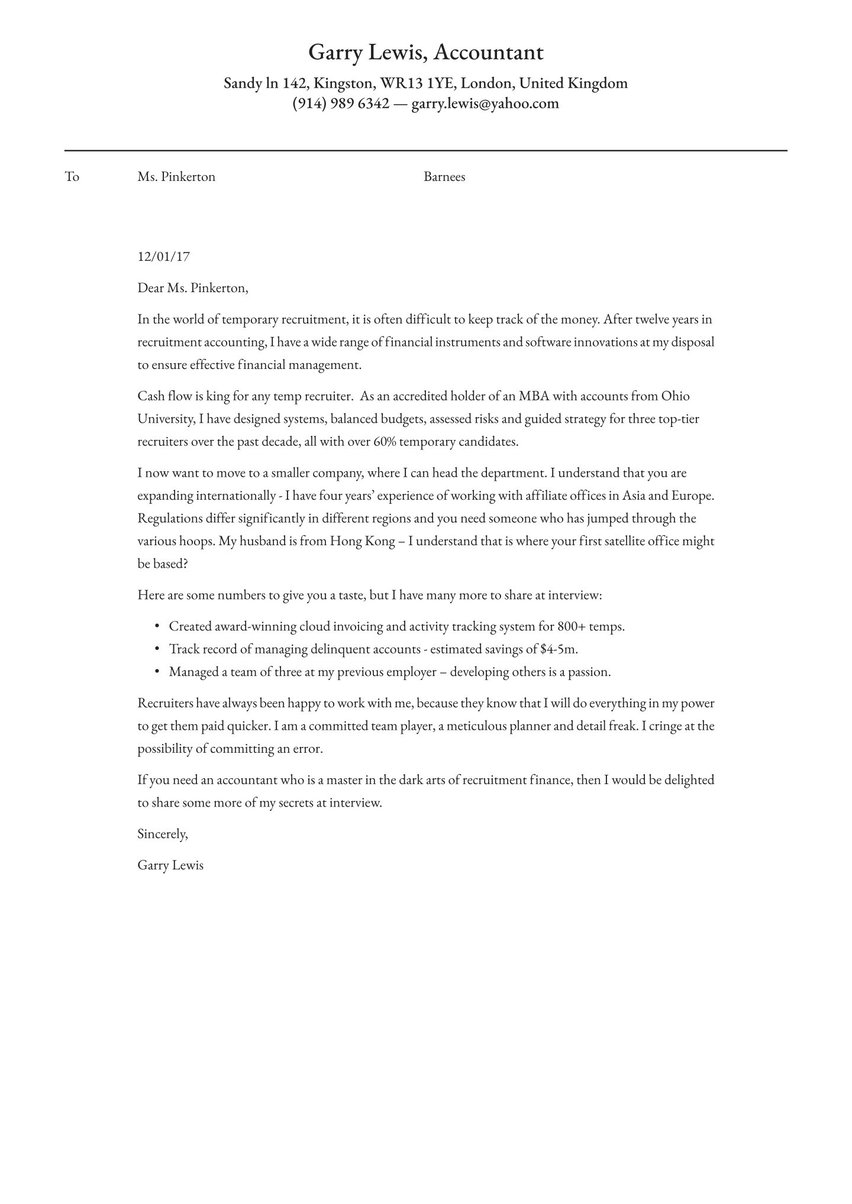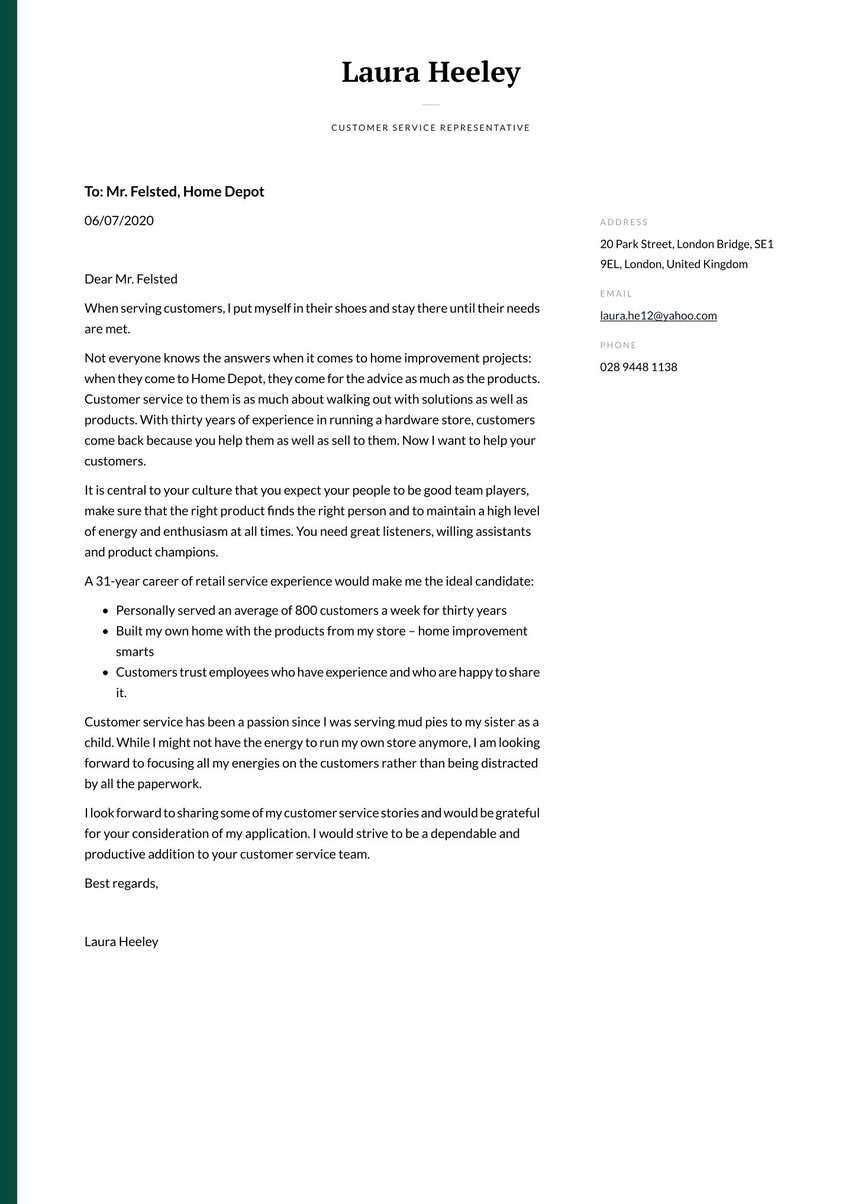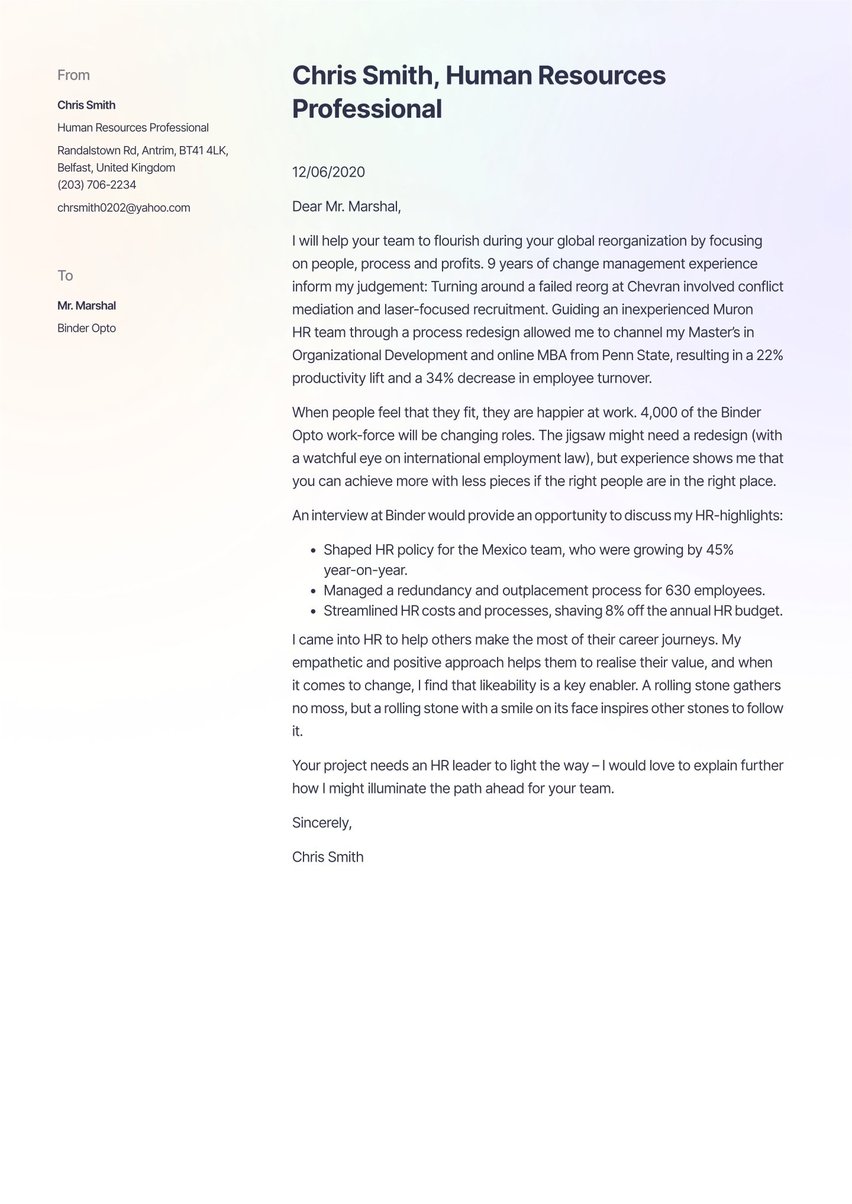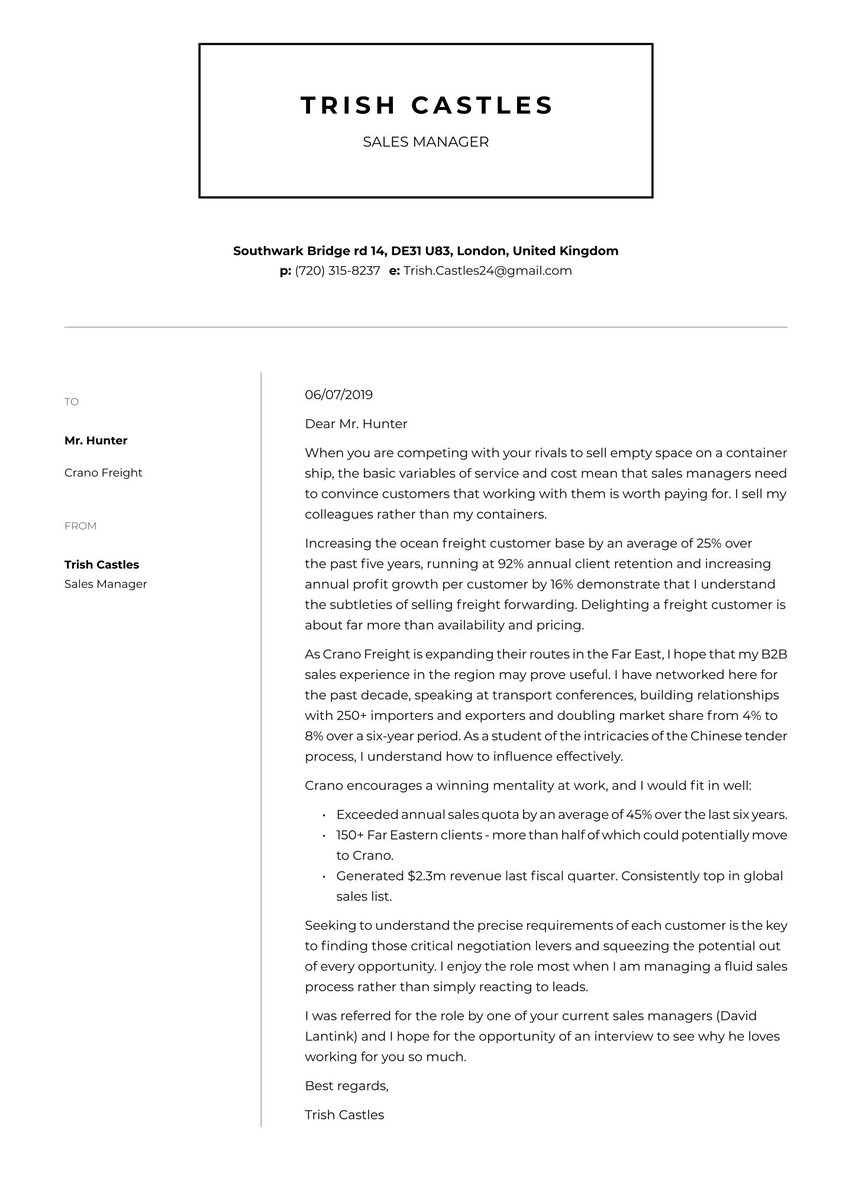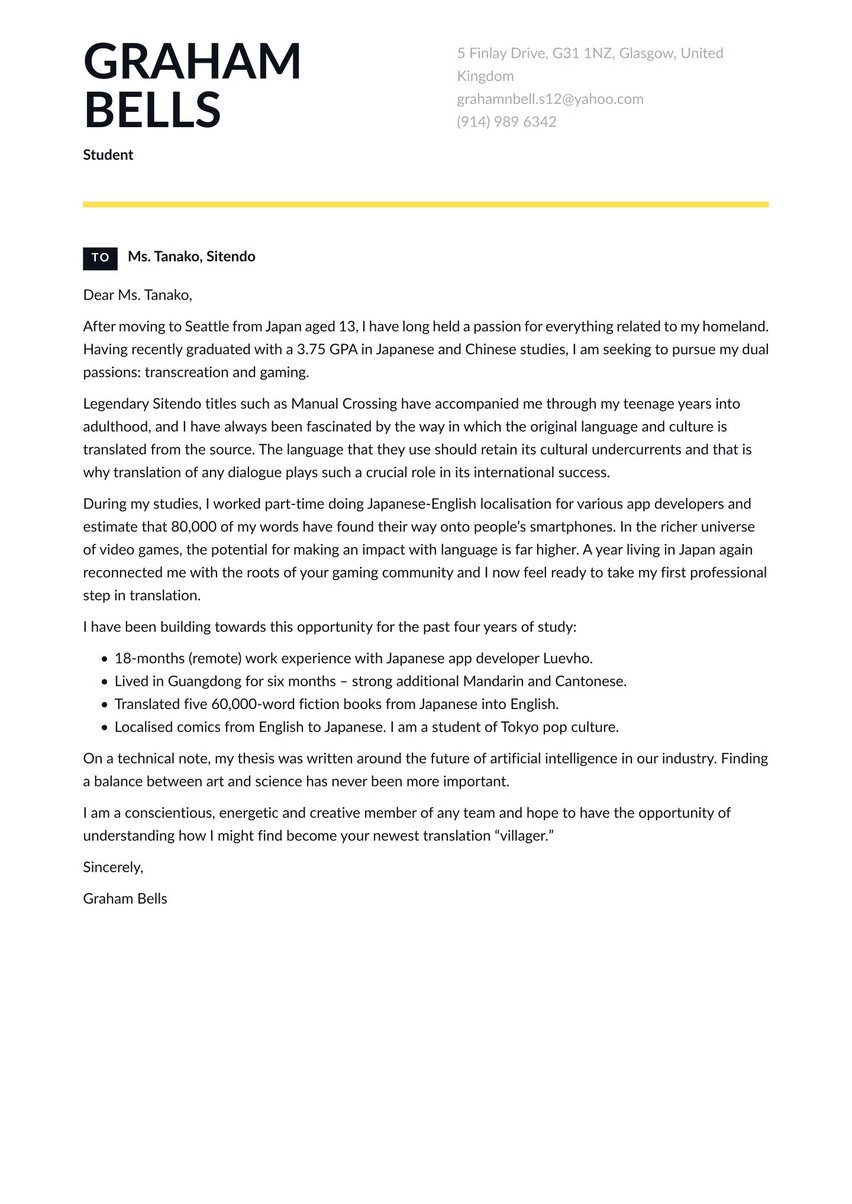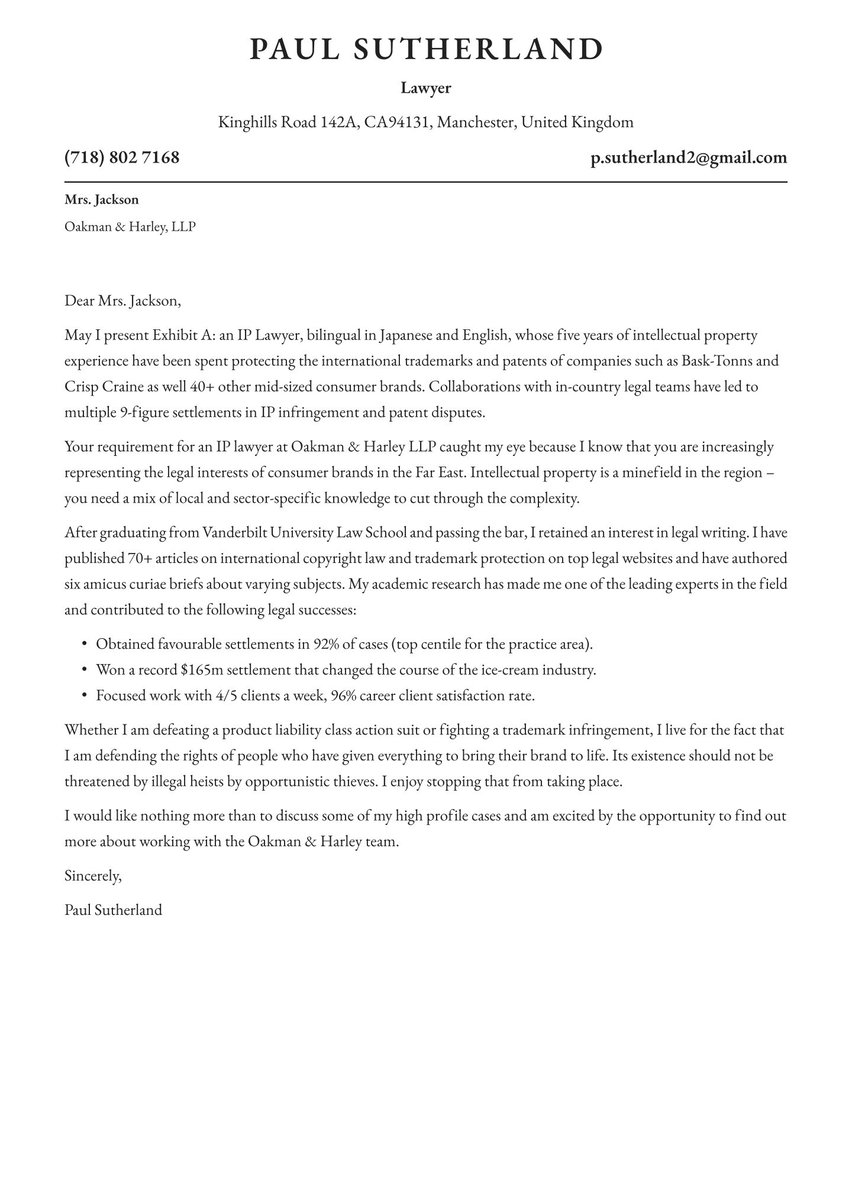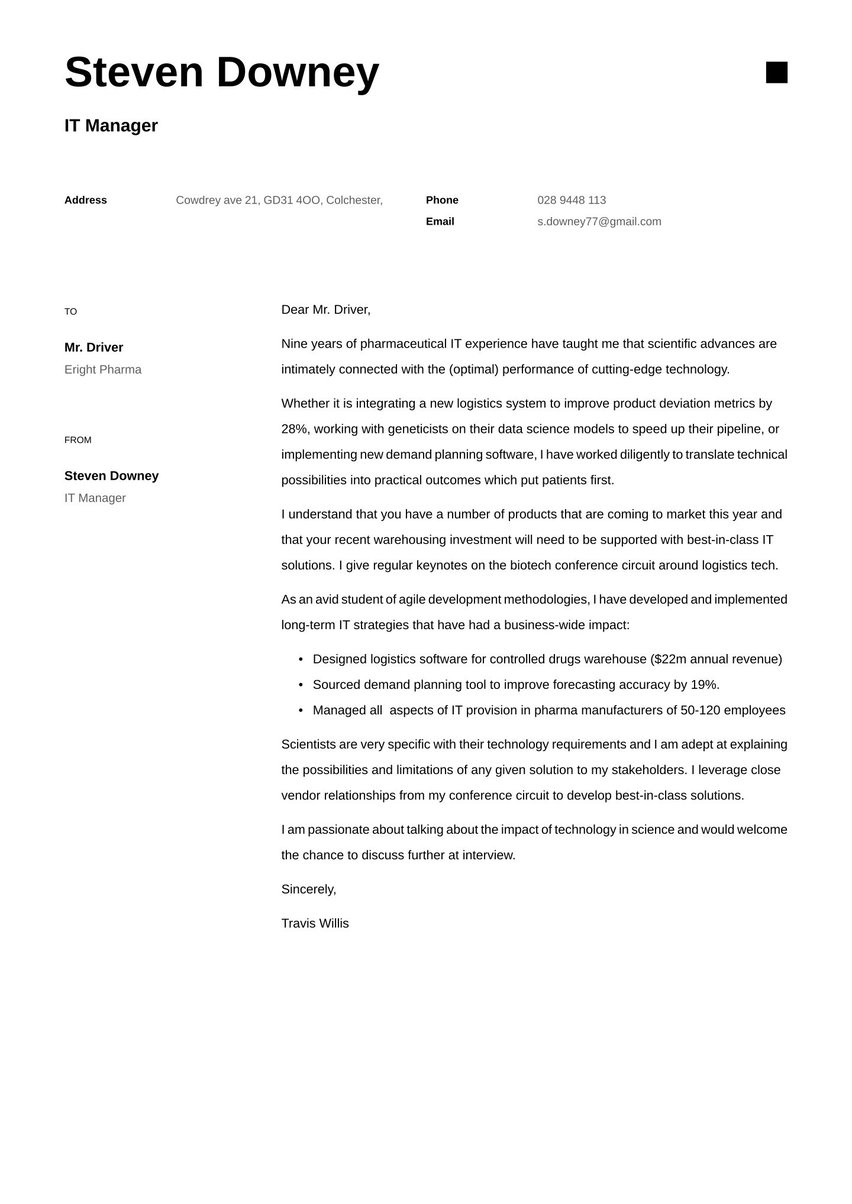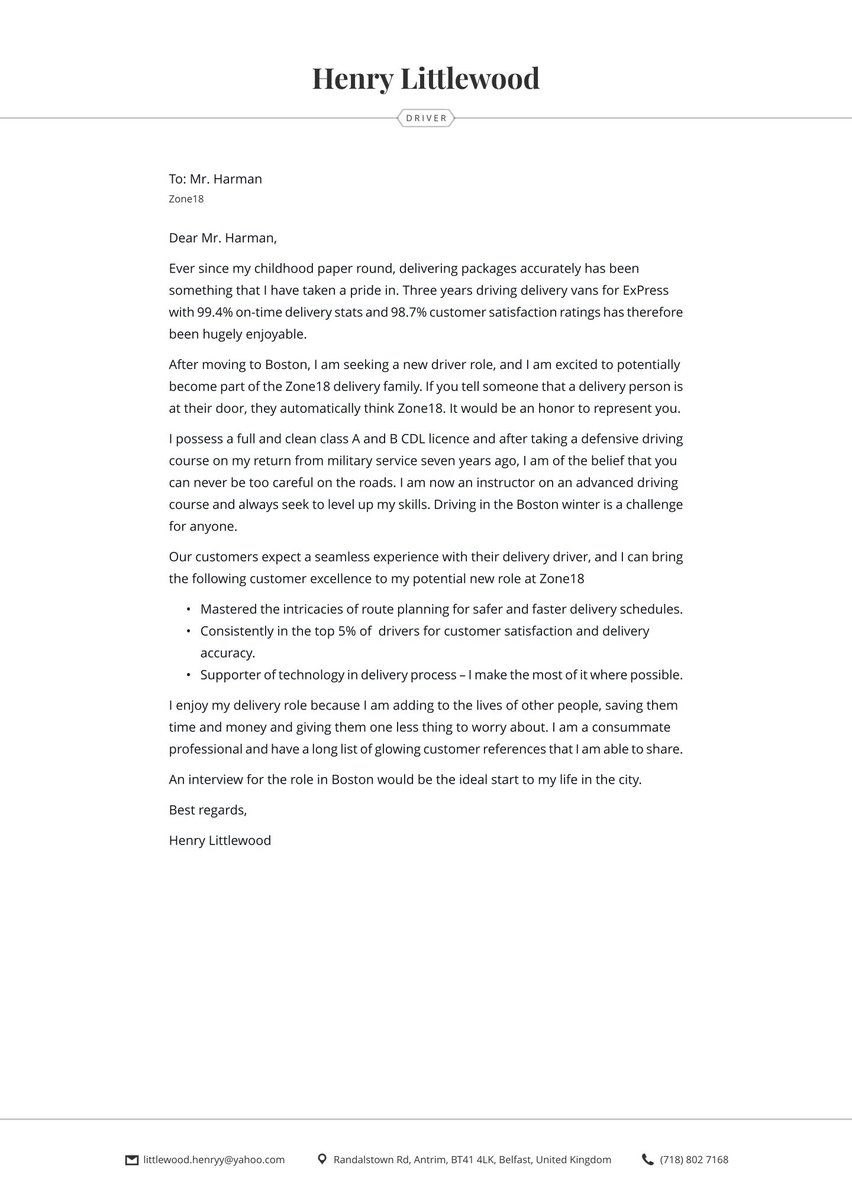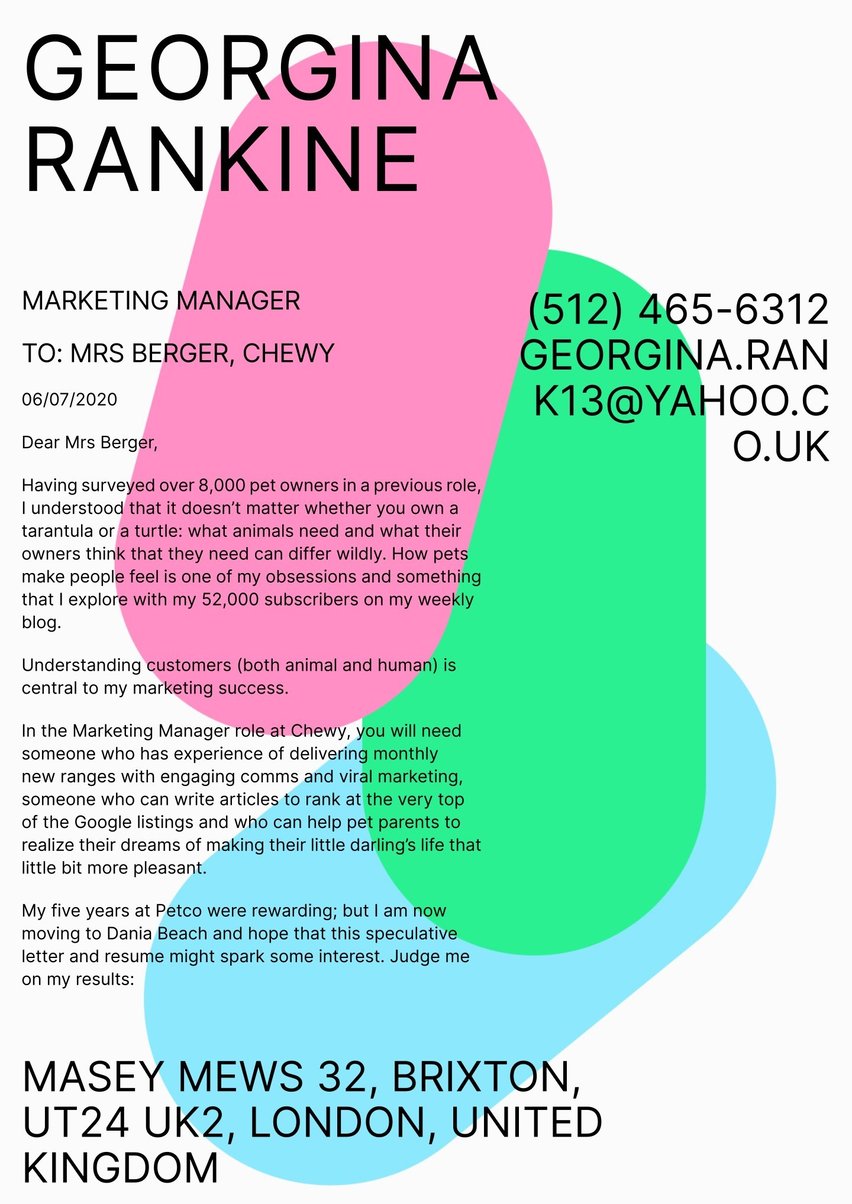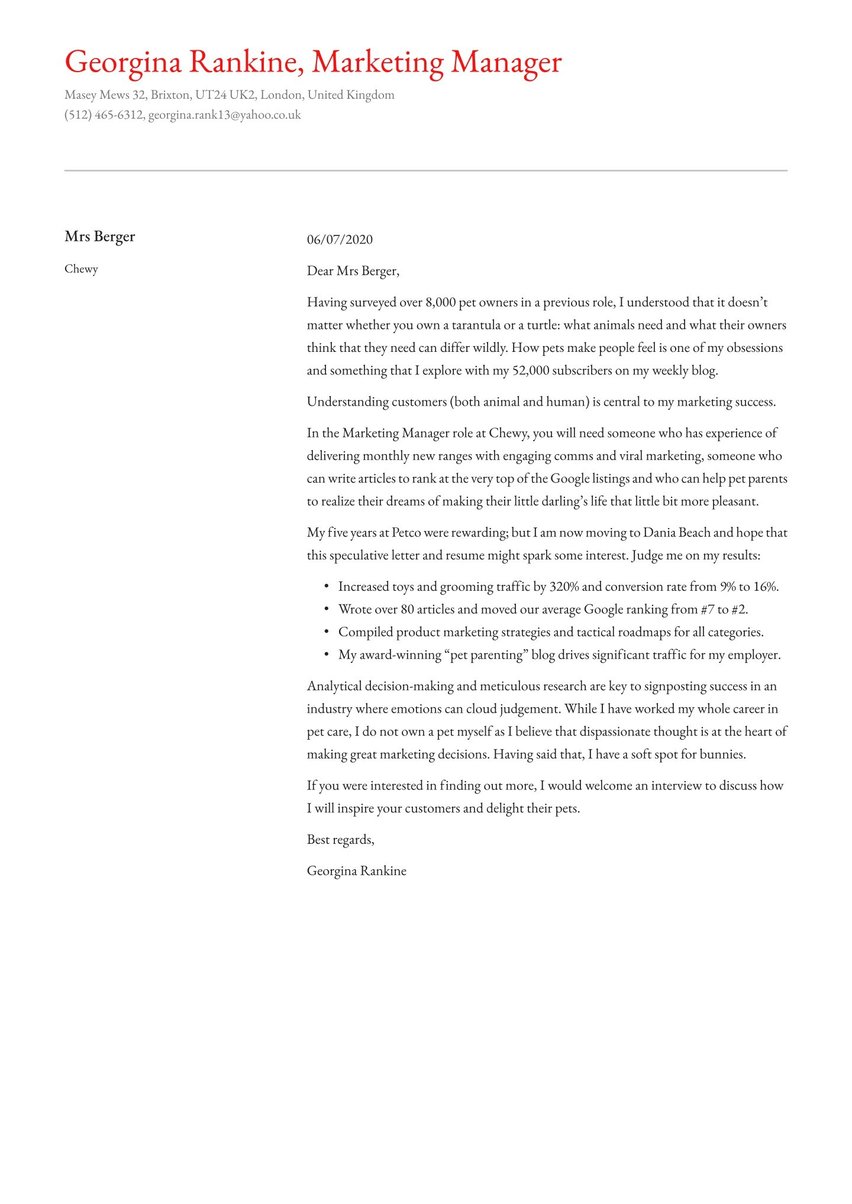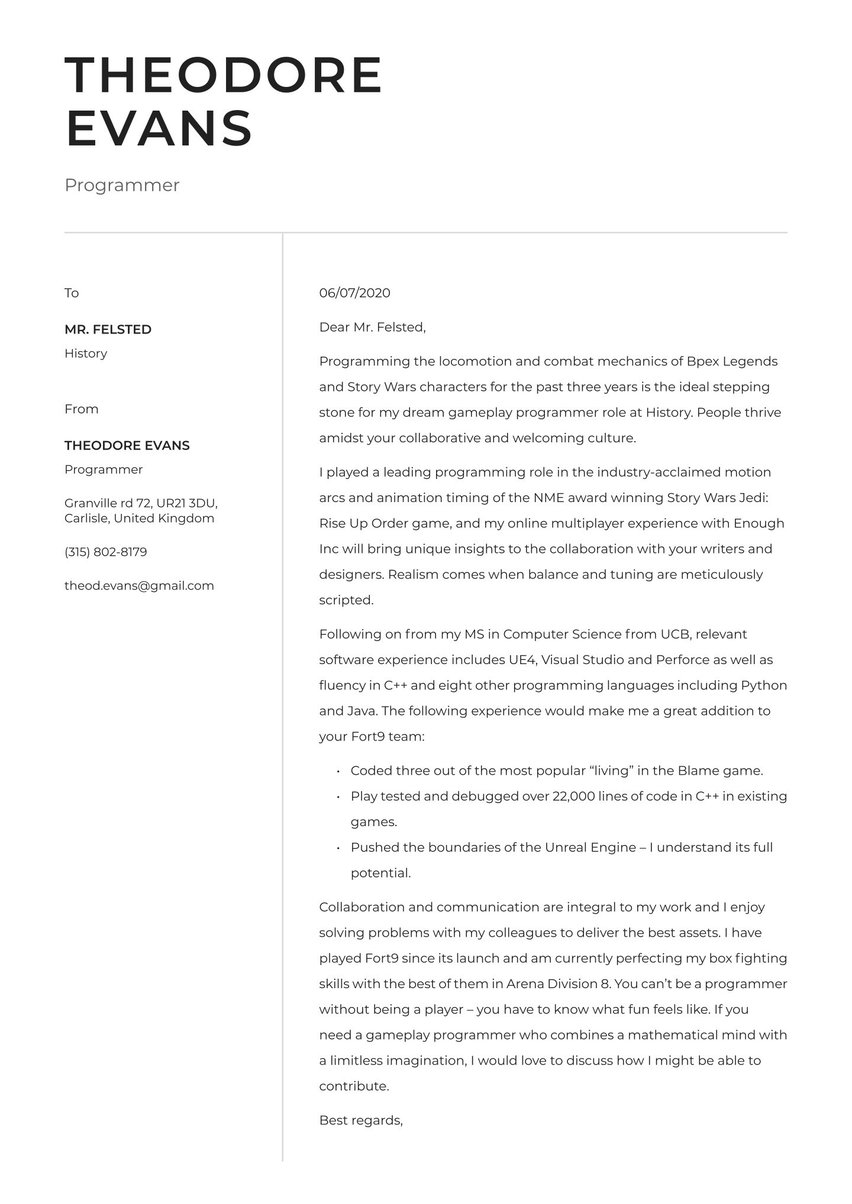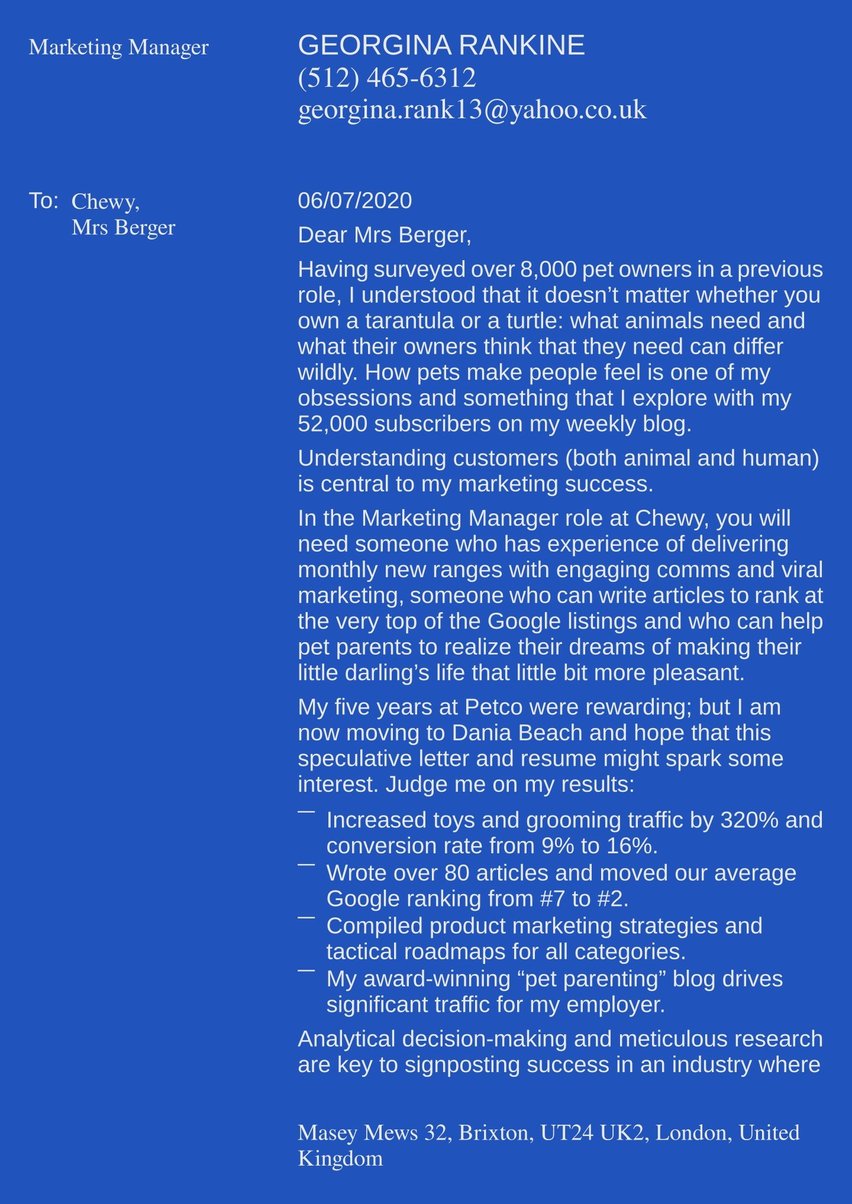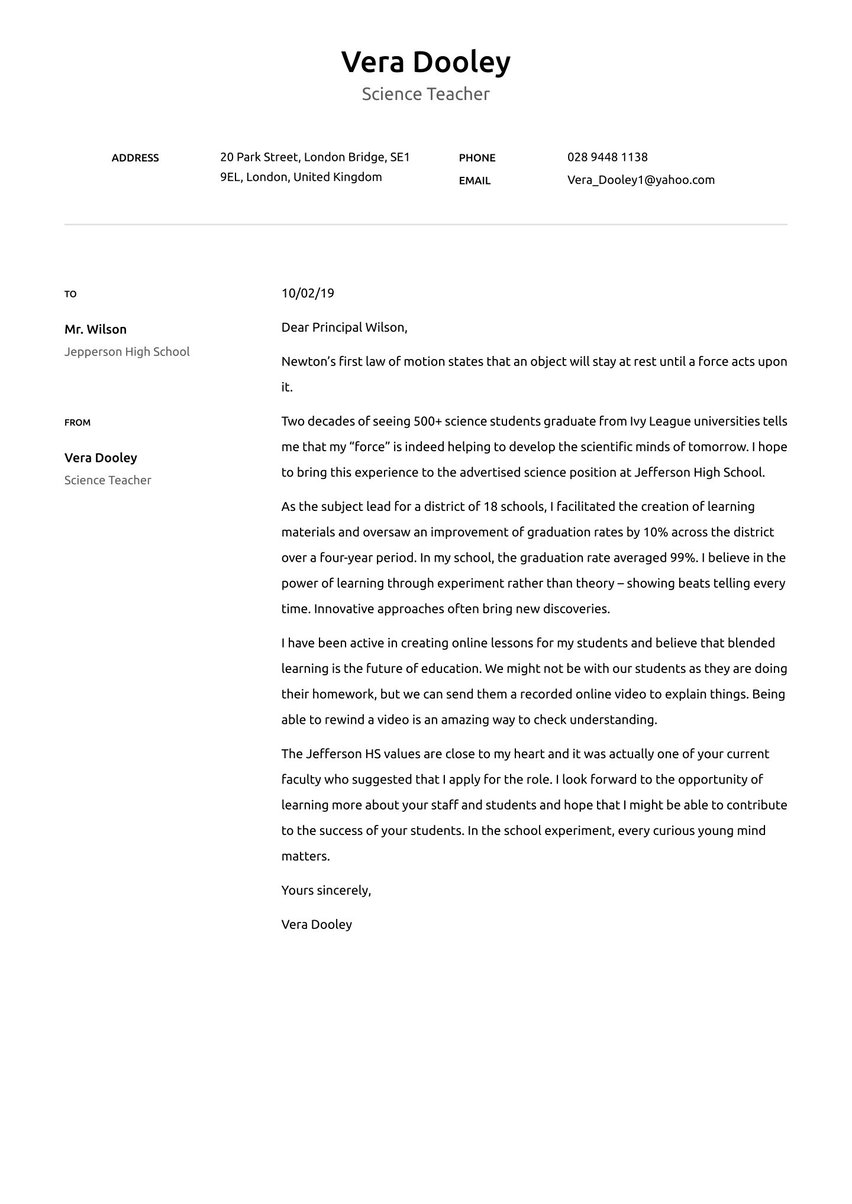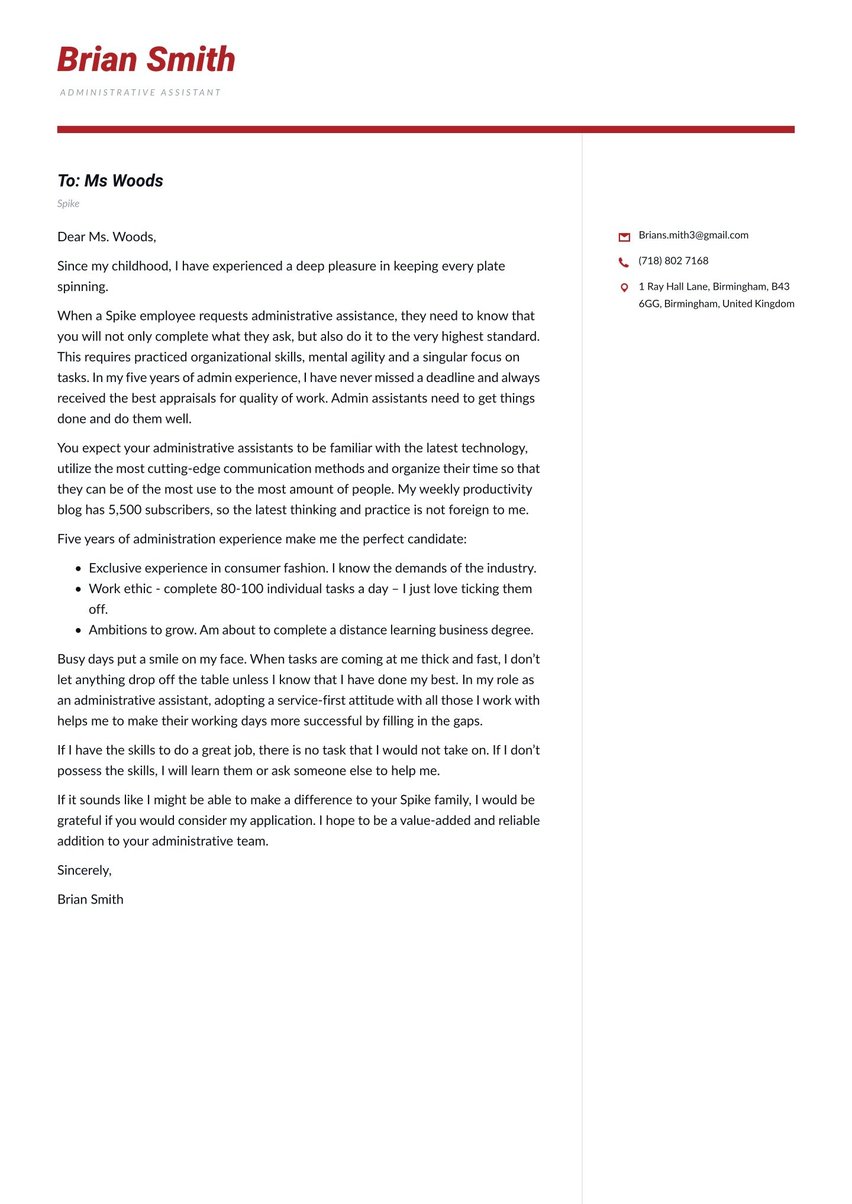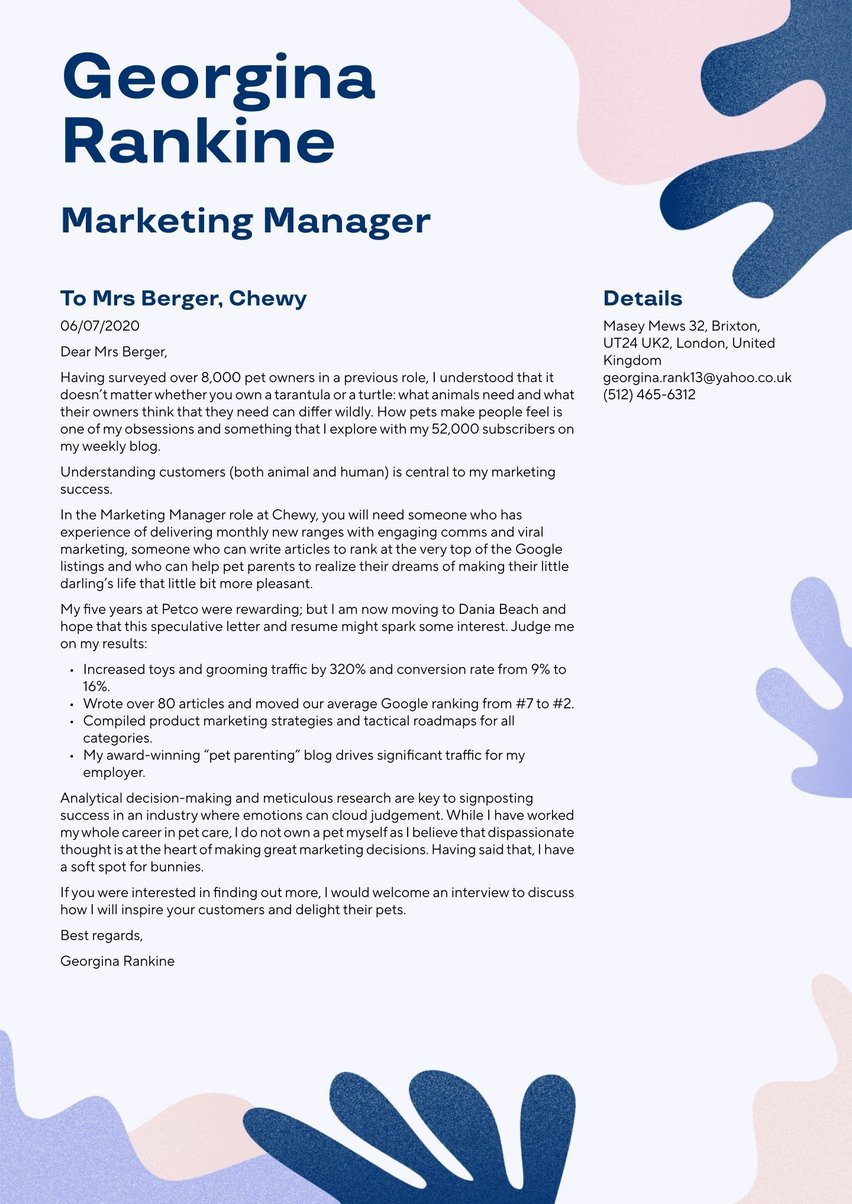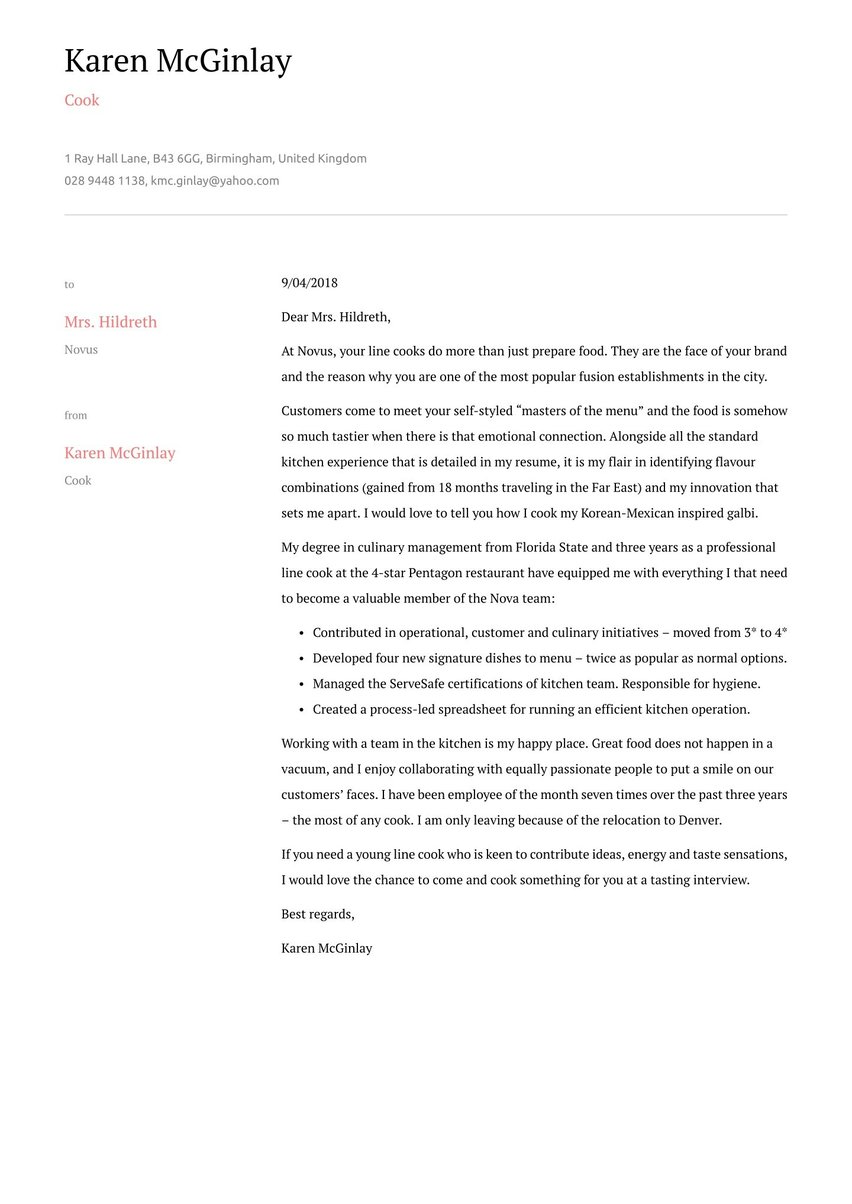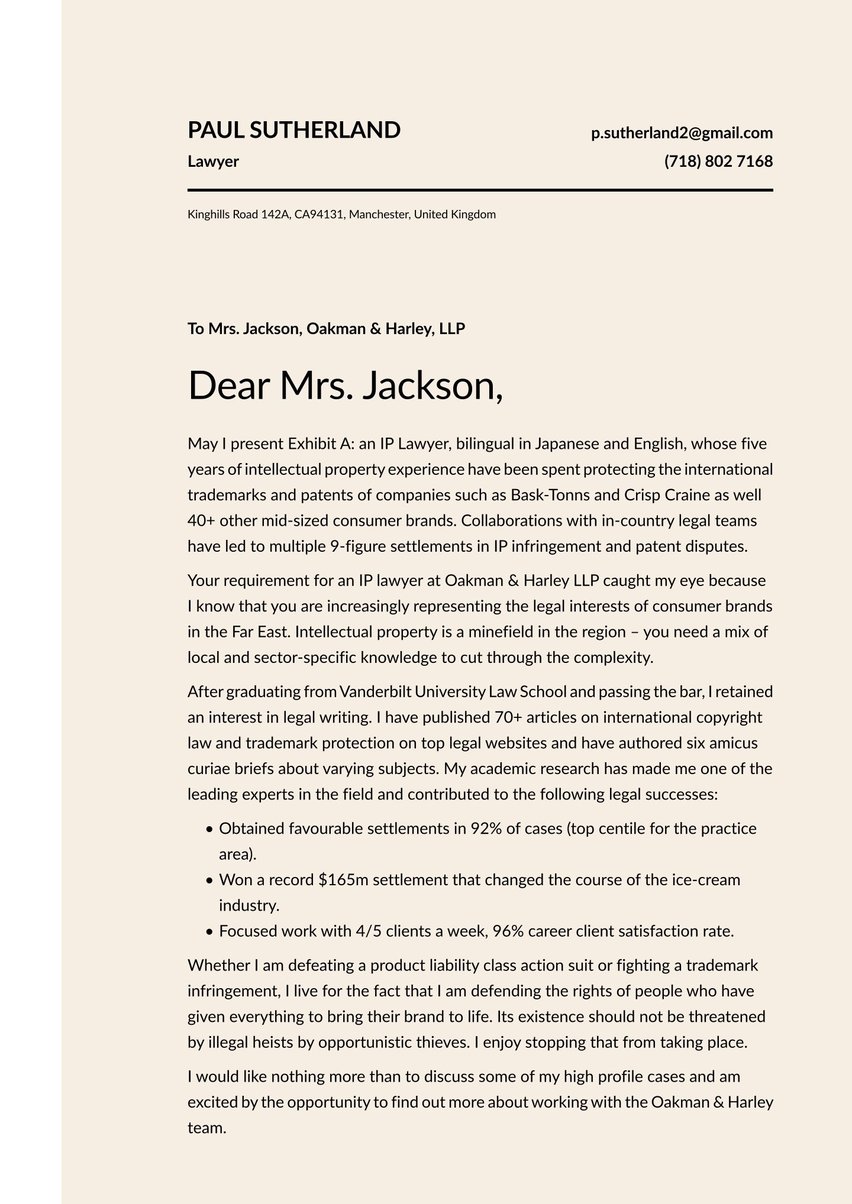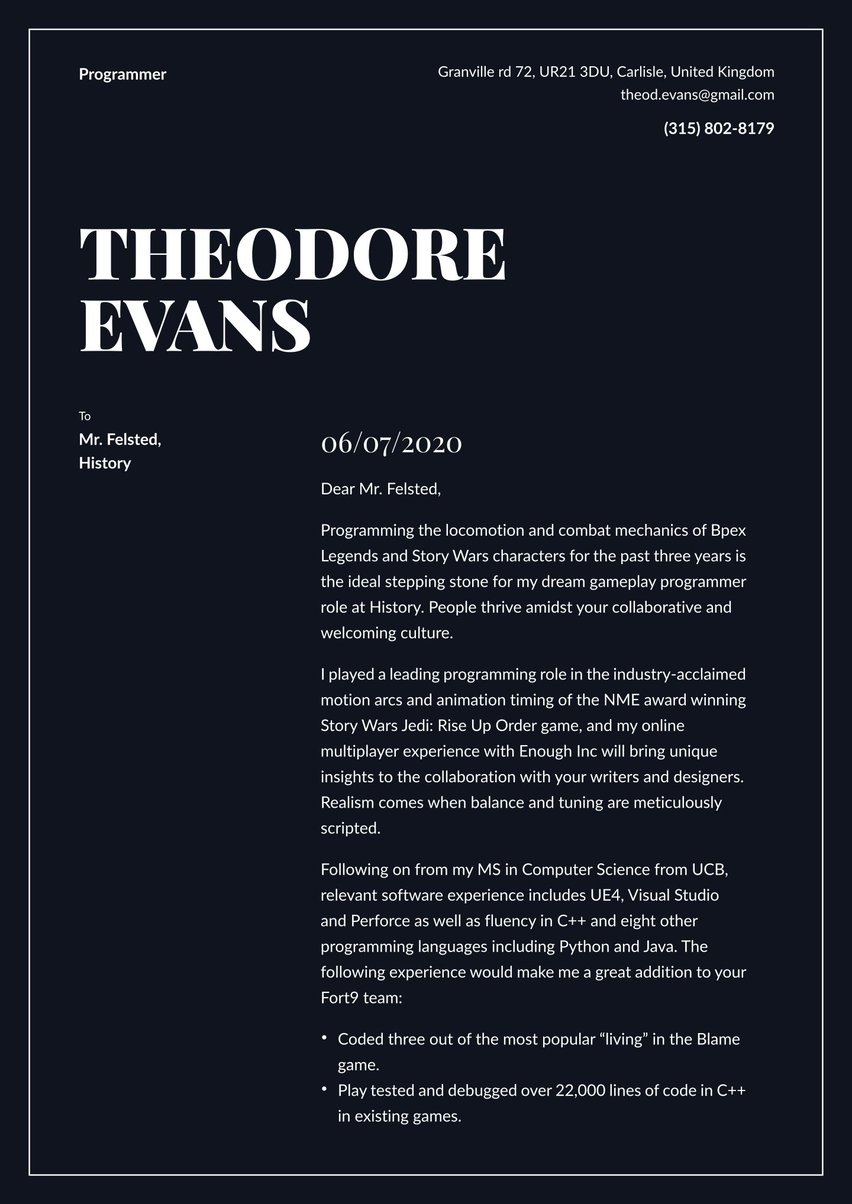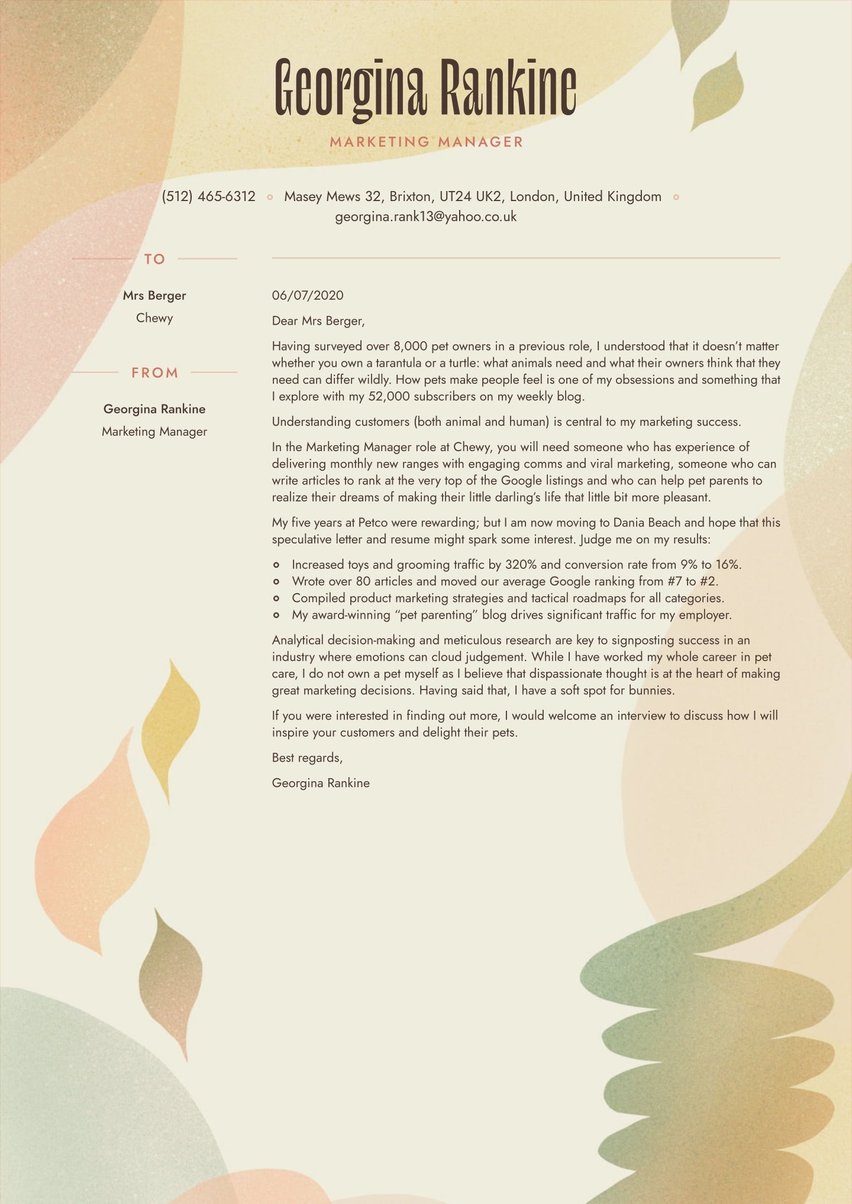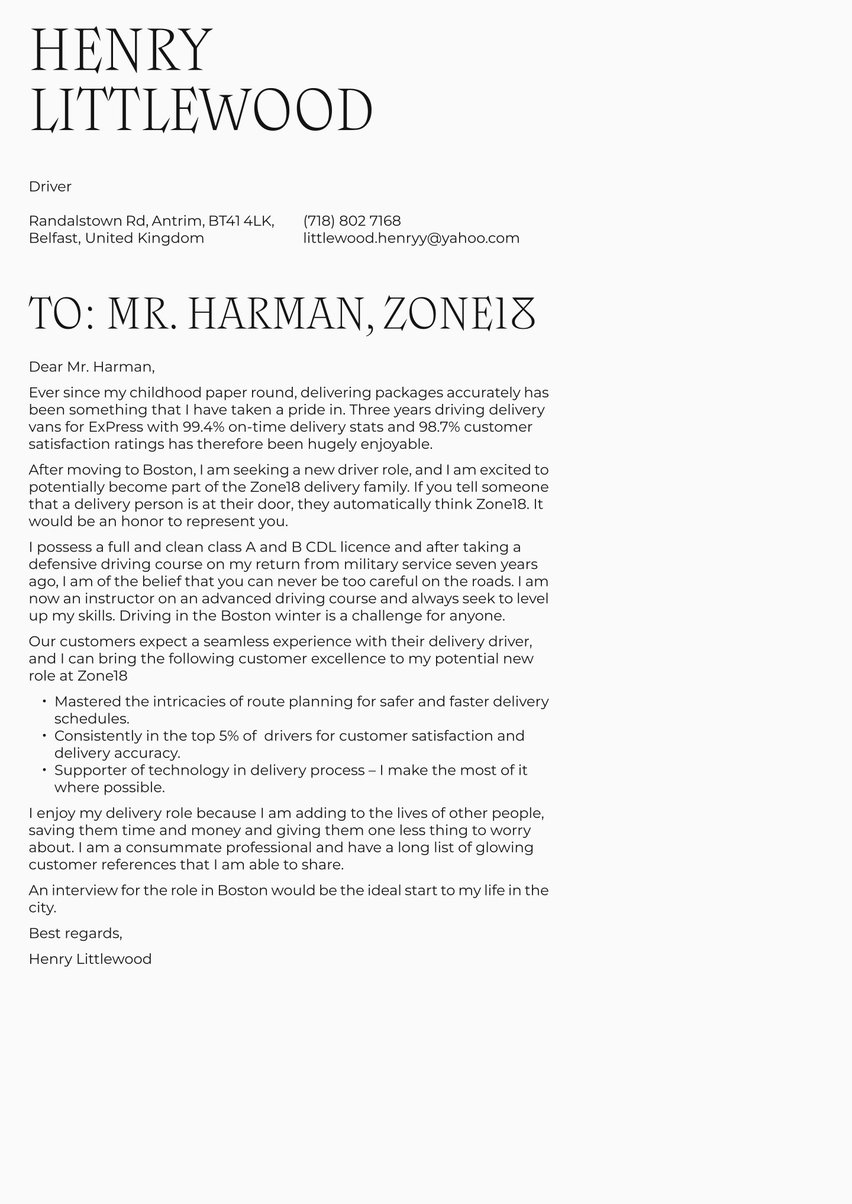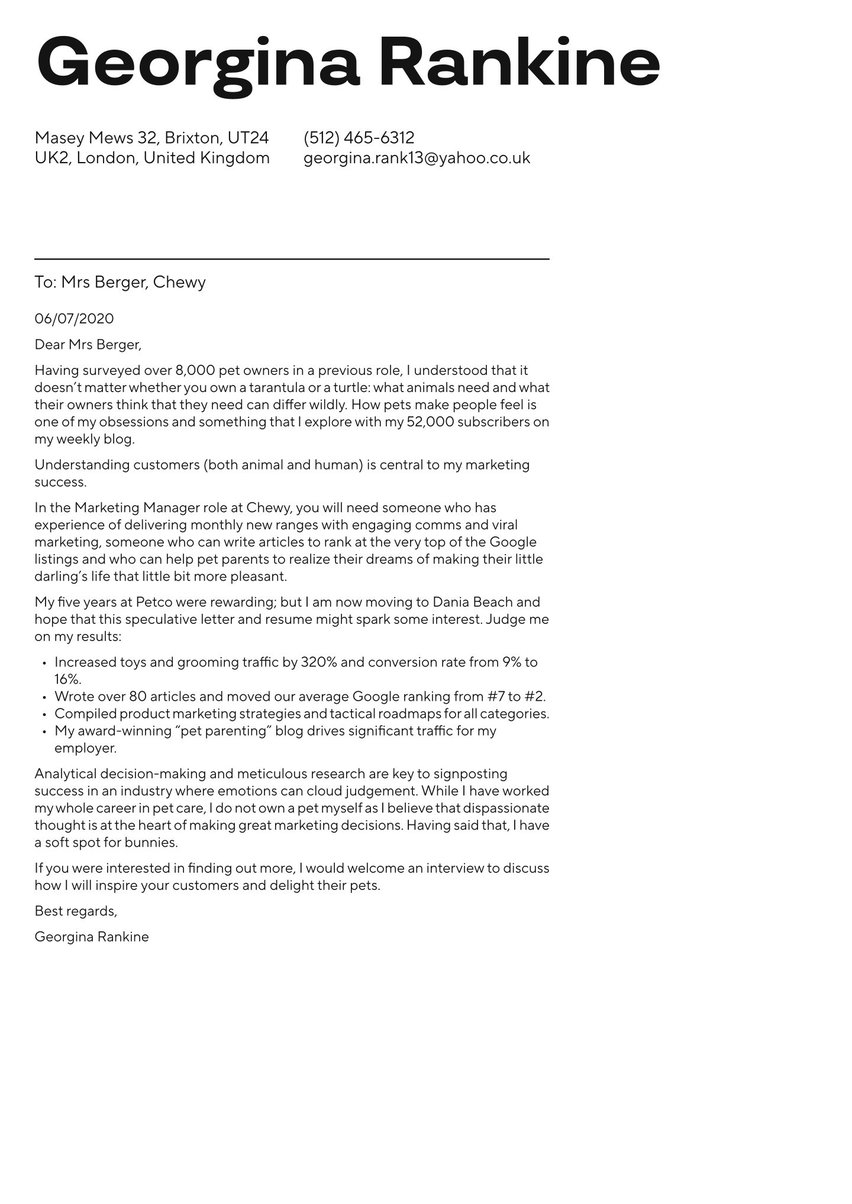You may be an expert of keeping people safe online. However, are you giving the same level of care to your professional cybersecurity endeavours? Do you know how to navigate the intricate balance of the job application process just like you do with secure systems?
Cybersecurity professionals are trusted with business-critical issues, so it is important that you can demonstrate a track record of trust and delivery. The cyber security cover letter is therefore about the your personality and softer skills as well as your technological abilities.
Resume.io is here to help. In this cybersecurity cover letter guide, along with the corresponding cybersecurity cover letter example, we’ll cover the following topics to help you write the best cover letter possible:
- How to choose the best cover letter format and what paragraphs the cover letter should include
- How to maximise the effect of each cover letter paragraph (header, greeting, intro, body and conclusion)
- What approach to take when writing your cover letter
- What mistakes to avoid when writing your cybersecurity cover letter.
Plus, if after reading our guide you want some further inspiration, we have a library of cover letter examples ready for you to browse and adapt for your own use.
If your writing has got you feeling anything but secure, check out some of our other free cover letter samples:
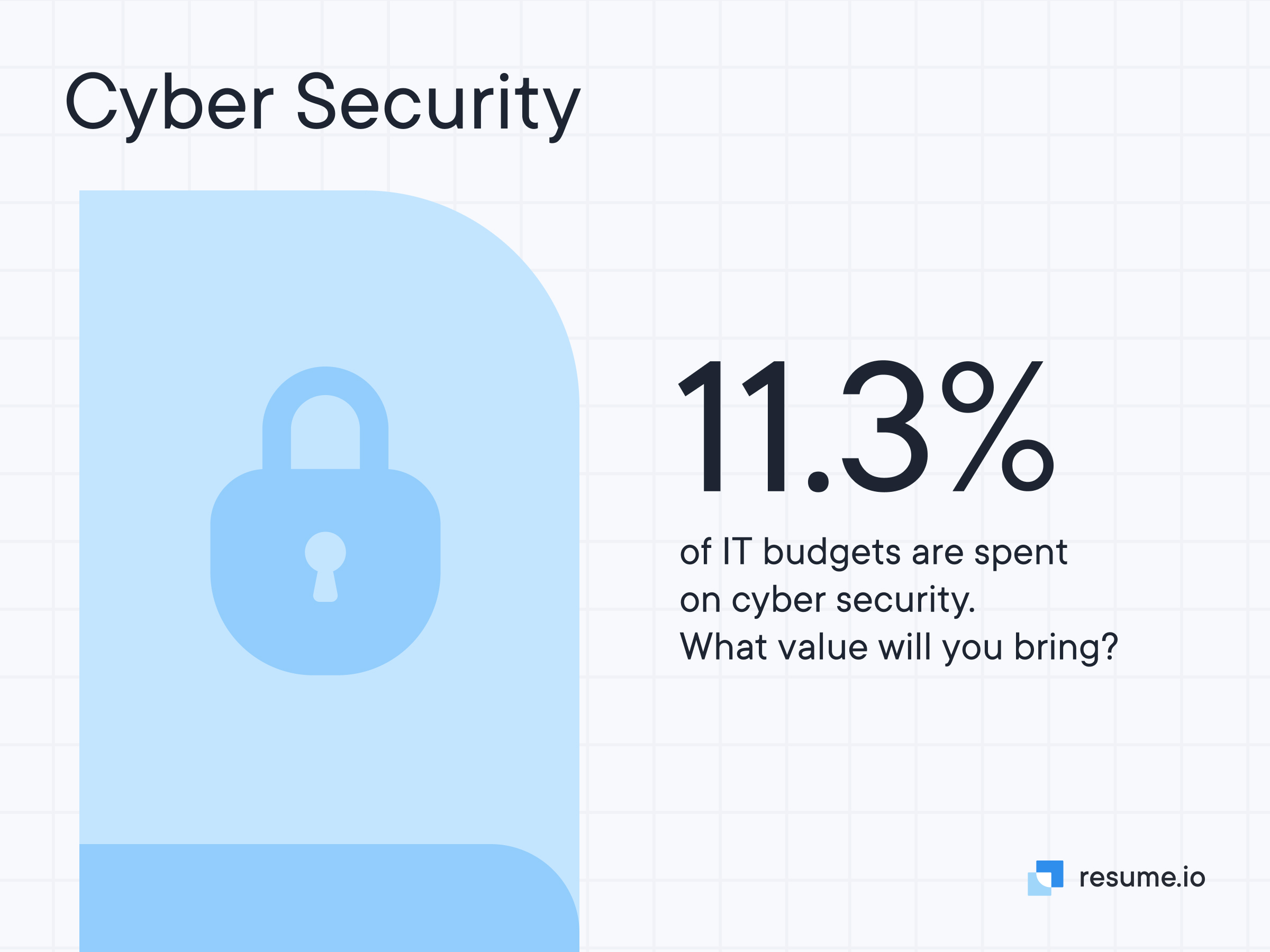
Best format for a cybersecurity cover letter
The right cover letter format will ensure the hiring manager sees you as a serious contender among your fellow cybersecurity candidates. Our advice is to meet the hiring manager’s expectations with the cover letter format, and surprise them with the top content inside of it.
The format of a cybersecurity cover letter should contain the following elements:
- The cover letter header
- The greeting / salutation
- The cover letter intro
- The middle paragraphs (body of the letter)
- The ending paragraph of your cover letter (conclusion and call-to-action)
Start by looking at our cybersecurity cover letter example content below which you can use as the building blocks to develop your own:
Dear Mr Dursley,
Working in cybersecurity requires a sharp mind and a healthy dose of scepticism. My career has been filled with stories of near misses and disasters that have been averted by preventative action. Having read about your experiences over the past year at Fordson, I know that I can help.
I have spent the last year as an associate at a consultancy that offers cybersecurity solutions to big names across finance. When you are understanding M&A activity, security measures need to be watertight. In my current role, I have gained a thorough, practical understanding of compliance within legal and regulatory environments.
My main responsibilities have included executing preparatory audits for client projects to assess security control gaps. I have worked with people across every function within financial services, allowing me to understand the nuances. This has resulted in a 30% increase in client retention since I joined the team.
In my current role my ability to quickly build rapport and trust means the team often uses me as a liaison with general staff in client teams. This has helped client results as I am able to ensure compliance with our workflow proposals. Cybersecurity makes an impact when management integrates our procedures into the fabric of the business processes.
I would love to join the cybersecurity team at Fordson. I am confident that my past experiences make me an excellent candidate for the role and I hope to be able to tell you more in an interview.
Sincerely,
Louise Barker
Cover letter header
The cover letter header is where you share your important details. Include your full name, email and phone contact. This section sits right at the top of the document. It’s the first thing a busy hiring manager should be able to quickly locate.
There is no need to include your full home address in the cybersecurity cover letter header. Privacy is important for anyone working in cybersecurity and data protection may be an issue with a cover letter than will be stored in countless recruitment databases. The inside address of the employer is also not required - use this extra space to tell your career story.
Who knows? By pressing the right buttons in the rest of your cybersecurity cover letter, you could pique their interest enough for the hiring manager to give you a call then and there. The goal is always to be invited to interview, so don’t make it difficult for anyone to do just that.
Cover letter greeting
It’s no surprise to a cybersecurity professional that starting a project — or cover letter — in the right way is an important step to success. Your first impression should be short and simple.
Skip the “To whom it may concern” in favour of a personalised greeting: ”Dear Mr/Mrs [insert last name here]”.
If the contact person’s name is not in the job listing, take a few extra minutes on the company website and LinkedIn to figure out who you’re likely to be writing to. Even if you end up speaking with that person’s boss or assistant, you will stand out for having made an effort. That’s a step further than some of your fellow cybersecurity candidates will go.
Cover letter introduction
Now you can get into the content of the cover letter. The introductory paragraph should set the scene of why you’re the cybersecurity professional for the job. Cover letters shouldn’t exceed one page in length, so try to make sure this short paragraph hits the following points:
- Explain who you are and why you’re writing.
- In a short sentence, why are you the person for the job?
- Summarise the promise you will deliver on in the rest of the cover letter.
These first sentences should grab the attention of the hiring manager and start the conversations that you wish to continue during a potential interview. You are in charge of what you share, so make sure that you check with the job description and ensure that your stories are relevant to the role in question.
Our cover letter sample introduction below lays out an example of how you can do this for a cybersecurity cover letter while engaging the hiring manager. The introduction is like the cover letter summary that will make them decide whether or not the rest of the letter is worth their time.
Dear Mr Dursley,
Working in cybersecurity requires a sharp mind and a healthy dose of scepticism. My career has been filled with stories of near misses and disasters that have been averted by preventative action. Having read about your experiences over the past year at Fordson, I know that I can help.
Cover letter middle part (body)
The middle paragraphs of cover letters are not only the most important, but they offer you an opportunity to think about why you are the best person for this cybersecurity job. A great approach is to base the middle part of your cover letter on a couple of examples that make it clear why you are the cybersecurity whiz with the skills and experience necessary to deliver what this cybersecurity team needs.
Each example you choose should address an important point from the cybersecurity job description. An easy way to approach this is to make sure each paragraph addresses one example and that it follows the STAR method. If you’re not familiar, the STAR method is a way of writing that consists of the following points:
- Situation. Set the scene with what the situation you were faced with was.
- Task. Clearly define the task you were given or you set for yourself.
- Action, What action did you personally take as a result of these first two points?
- Result. Don’t forget to clearly lay out the results that you achieved here.
I have spent the last year as an associate at a consultancy that offers cybersecurity solutions to big names across finance. When you are understanding M&A activity, security measures need to be watertight. In my current role, I have gained a thorough, practical understanding of compliance within legal and regulatory environments.
My main responsibilities have included executing preparatory audits for client projects to assess security control gaps. I have worked with people across every function within financial services, allowing me to understand the nuances. This has resulted in a 30% increase in client retention since I joined the team.
In my current role my ability to quickly build rapport and trust means the team often uses me as a liaison with general staff in client teams. This has helped client results as I am able to ensure compliance with our workflow proposals. Cybersecurity makes an impact when management integrates our procedures into the fabric of the business processes.
Make sure your cover letter mirrors the language in the job description for this cybersecurity role. Repeating the job description’s word choice helps the comprehension of the hiring manager so there’s no doubt that you’re ticking the boxes on their checklist.
How to close a cybersecurity cover letter (conclusion and sign-off)
The final lines of your cybersecurity cover letter should wrap up this curated extract of your career journey and reflect your enthusiasm. Don’t be afraid to throw in a call to action. Your goal is always to get invited to an interview. Cyber security professionals are in demand, so a sense of urgency will not work against you.
By now you’ve hopefully created enough curiosity with the hiring manager for them to invite you to interview. All that’s left to do is adhere to the cover letter format’s criteria and sign off with a concise “Sincerely,” followed by your name.
I would love to join the cybersecurity team at Fordson. I am confident that my past experiences make me an excellent candidate for the role and I hope to be able to tell you more in an interview.
Sincerely,
Louise Barker
Cybersecurity cover letter with no experience
If you are working in a technical field such as cybersecurity, you’re likely to have some training under your belt. However, as the field becomes more important across all industries, there are more entry-level positions available in the field. Enthuse the hiring manager with points other than relevant professional experience by following some of these suggestions.
Hiring managers will look for the presence of certain hard skills and experience for cybersecurity roles. However, it’s also true that enthusiasm and commitment to the sector will take you a long way and open opportunities for you. The good news is that your cover letter is the perfect place to communicate that.
Finally, don’t underestimate the benefits of experience or interest within the industry that the role is in. If you are applying for a cybersecurity position in a media conglomerate and you happen to have written about cybersecurity for your college’s newspaper, mention that! You may be aiming for a specialist career in cybersecurity, but an understanding of the industry that you’re operating in can often go a long way.
Key takeaways
- Meet the hiring manager’s expectations when it comes to the cover letter format and surprise them with personalised content.
- Find convincing examples of your cybersecurity proficiency and show them off using the STAR method.
- A lack of cybersecurity experience can be compensated for with enthusiasm and an understanding of the industry you’re operating in.
Ready to get started? Our cover letter templates are free to start using so that you can get writing.

